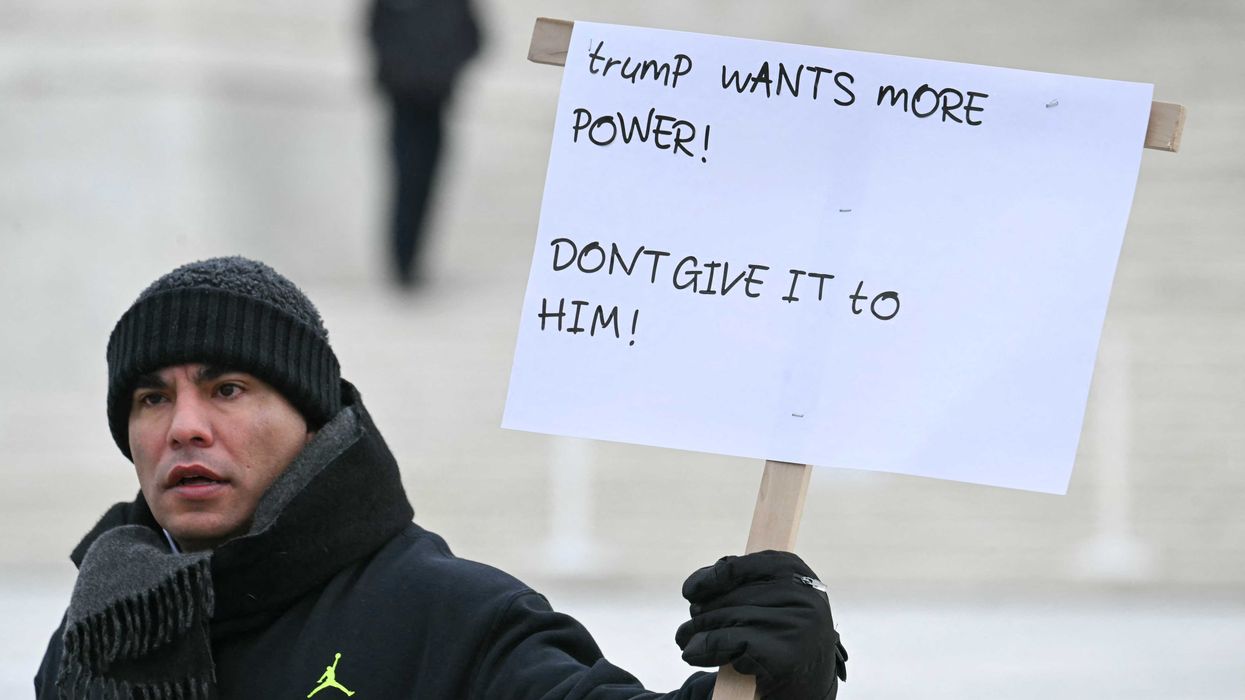Sometimes, it's difficult to know if your words and actions have the desired impact. Today on The Glenn Beck Program, Glenn received a very special gift from Heath, a listener who shared how The Immortal Nicholas has impacted his son. Heath's eight-year-old is quite enamored with the concept of Santa, and it showed during a recent visit paid to St. Nick.
"My son gets up on Santa's lap. Santa is asking him what he wants for Christmas, the normal banter, and my son is going on about, Hey, you look really great for your age. How many Macy's parades have you done? I mean, you look really fantastic for as old as I know that you are. Santa is just looking at him smiling. Finally, he leans into his ear, and he says, I know your real name is Agios.
"Oh, my gosh," Glenn replied.
Agios is the main character from Glenn's Christmas book The Immortal Nicholas.
"As we're walking off, my son is like, Man, I'm glad I got that off my shoulders. And he's like, Dad, you know, we should have got him some frankincense and brought it to him. But I know that probably would have brought back some bad memories.
"Oh, how great. What a great story," Glenn said.
Glenn wrote The Immortal Nicholas for his own children who were paying too much attention to Santa and missing the real meaning of Christmas.
"They were buying into the Rudolph and the North Pole toy shop and everything else. And I needed a way --- I didn't want to be the anti-Santa dad --- so I needed a way to bring the story of Santa in and yet not affect the story of the birth and death of Christ. And I'm so glad that you read it to him . . . and it worked," Glenn chuckled.
Heath ended the call with a special message for Glenn.
"I just want to call and thank you for contributing to the magic of Christmas and keeping that spirit alive for kids and adults alike," Heath said.
Enjoy this complimentary clip from The Glenn Beck Program:
Below is a rush transcript of this segment, it might contain errors:
GLENN: Hello, America. Let's go to Heath in Virginia. Hello, Heath.
CALLER: Good morning, Glenn. Good morning, Pat. Pat, Stu, Jeffy, Merry Christmas to you guys.
GLENN: Merry Christmas.
JEFFY: Merry Christmas.
CALLER: Hey, Glenn, I don't want to shift gears too much. I know you guys love talking about ladies handbags and dresses and jeans.
(chuckling)
STU: We do?
CALLER: Being mistaken as a gay designer. But that's okay.
STU: That's true.
GLENN: Right. Right.
CALLER: I wanted to share a quick anecdote with you guys, a funny Christmas story. We took our son to see Santa the other night at the mall.
And my 8-year-old is just eaten up the concept of Santa. And how this ties into you -- I'll get to that point quickly.
My son gets up on Santa's lap. Santa is asking him what he wants for Christmas. The normal banter. And my son is going on about, "Hey, you look really great for your age. And how many Macy's Parades have you done? I mean, you look really fantastic for as old as I know that you are." Santa is just looking at him smiling. And he said -- finally, he leans into his ear, and he says, "I know your real name is Agios."
GLENN: Oh, my gosh.
CALLER: And Santa glances at me like, "Is your son high? Is there something wrong with him?"
PAT: That's great.
(laughter)
CALLER: And I look back and I said, "Just go with it." So he kindly talks to him -- as we're walking off, my son is like, "Man, I'm glad I got that off my shoulders." And he's like, "Dad, you know, we should have got him some frankincense and brought it to him. But I know that probably would have brought back some bad memories."
GLENN: Oh, my gosh.
PAT: That's awesome.
GLENN: Oh, how great. What a great story.
In case you don't know what he's talking about, this is the book that I wrote for my children, and I think released last year or the year before, called The Immortal Nicholas. And I wrote it because I couldn't get my kids to pay attention to Jesus. They were just paying attention to Santa. And they were buying into the Rudolph and the North Pole toy shop and everything else. And I needed a way -- I didn't want to be the anti-Santa dad. So I needed a way to bring the story of Santa in and -- and yet not affect the story of the birth and death of Christ. And I'm so glad that you read it to him and it worked.
(chuckling)
PAT: How old is your son?
CALLER: He's eight years old.
PAT: Wow. That's great.
CALLER: And actually his question -- and I'm actually sad that I got through to you this morning while he's at school and he didn't have a chance to talk to you.
He wanted to know -- and he's gone on and on about it since last year, he's been asking numerous times, "Dad, Dad, how did Glenn Beck get the true story behind Santa?" I mean, he will not leave me alone about it. He wants to know how God told you. Did he come to you in a dream? Were you, you know, were you out in the wilderness? Where were you that God shared this story with you about Agios and how -- so if you could wrap it up.
GLENN: You can tell him that it wasn't God. It was -- it was Santa that told me.
CALLER: Okay. Okay.
GLENN: And you have to be of a certain weight and body shape to be able to have Santa to trust you. And so I kind of resemble Santa in my body shape.
But you could just tell him that it was Agios that told me because he may know -- there's an episode of The Vault that is coming up, where I share some things that my children have received from Santa. My -- my second oldest daughter, when she was very young, got a sleigh bell from Santa. She was just at the edge of unbelieving. And she wanted -- the only Christmas present she wanted was a sleigh bell. She didn't tell anybody about it. And it wasn't there under the tree.
And thank goodness the next day we had figured out that he may have dropped it off -- out of his pocket, and it rolled down the roof, and it was right there at the chimney at the bottom. And so she found that. And two years ago, my youngest child, Cheyenne, was at the age of unbelieving. And Santa left her this unbelievable handmade glove, leather glove, that has the rain marks on it and everything else that is marked Santa. And he left her this glove. And it was -- I mean, it was pretty remarkable.
I mean, you would -- you can't buy something like that in a store. And you would need like, you know, your own personal I don't know, fashion company or something to be able to make something like that.
STU: Hmm.
GLENN: And so -- but you can tell her --
PAT: And nobody has that. Nobody has that.
GLENN: Yeah. You can tell him that Santa has been very kind to us, and we don't know why.
CALLER: Okay. I will do that. He has been the same to us. So I just want to call and thank you to contributing to the magic of Christmas. And keeping that spirit alive for kids and adults alike.
GLENN: Thank you. Man, I can't -- I can't tell you -- this is -- I don't -- I don't recall very many calls on The Immortal Nicholas. Like this, where people have shared with me reading it with their children. And I am so glad that -- I am so glad that you had that experience. Thank you. That means the world to me.
CALLER: Thank you.
GLENN: You bet. You bet.
Featured Image: The Immortal Nicholas


 JIM WATSON / Contributor | Getty Images
JIM WATSON / Contributor | Getty Images
 Joe Raedle / Staff | Getty Images
Joe Raedle / Staff | Getty Images AASHISH KIPHAYET / Contributor | Getty Images
AASHISH KIPHAYET / Contributor | Getty Images Harold M. Lambert / Contributor | Getty Images
Harold M. Lambert / Contributor | Getty Images